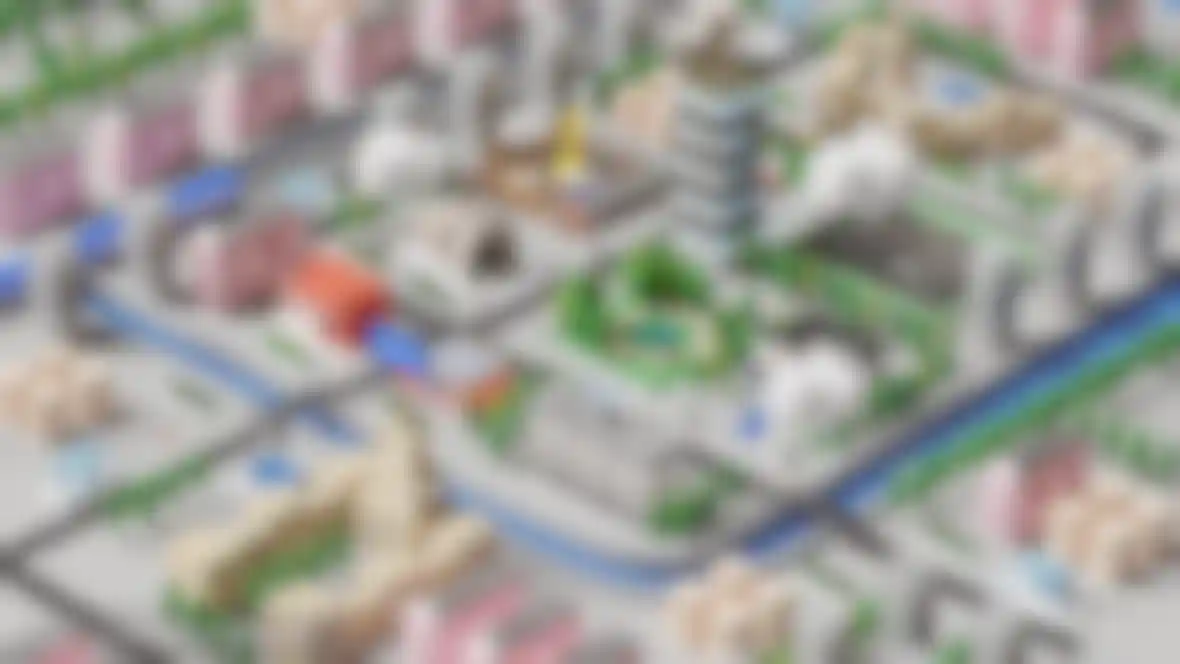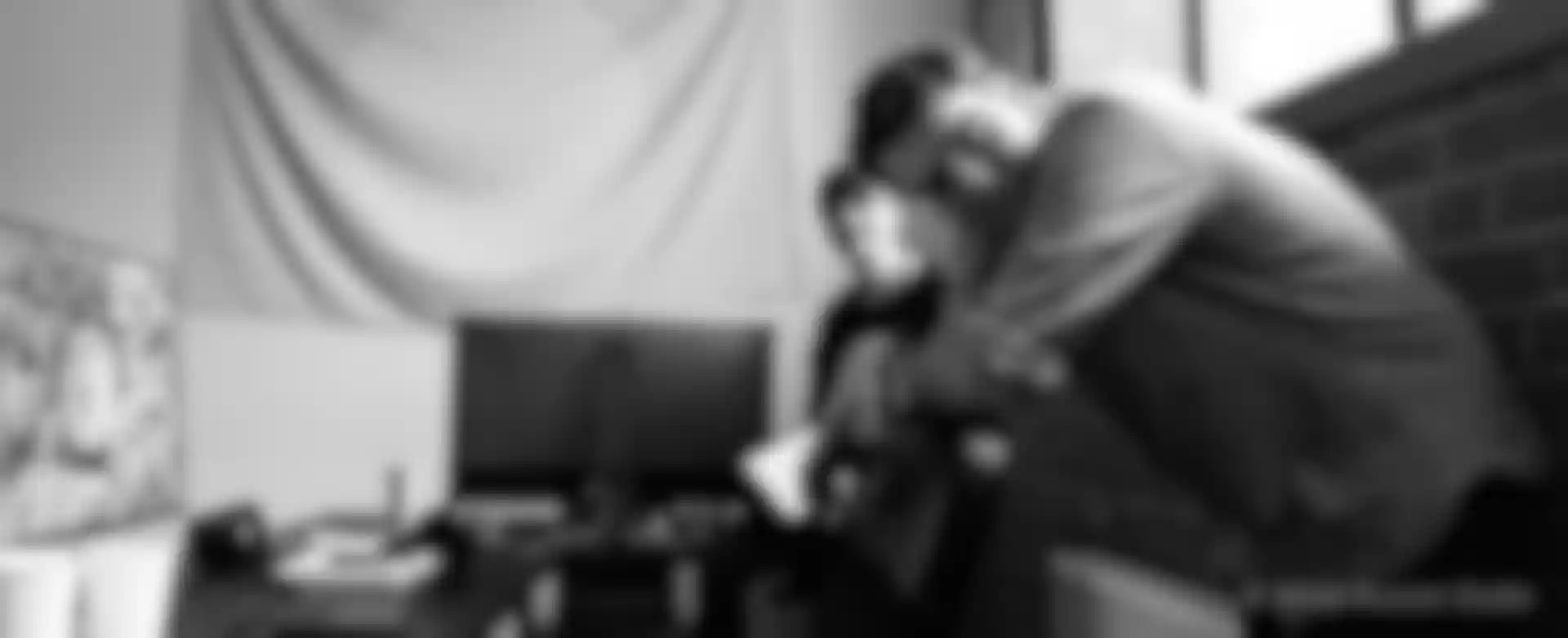
Always Experimenting White Russian Studio explains how they used 3D and AR for two imaginative projects.
Located in the heart of Moscow, White Russian Studio was founded in 2014 by Roman Lyubimov (art director), Dima Baraulin (motion director) and Stanislav Antipov (digital director). Known for creating imaginative, unique work for many of Moscow's well-regarded agencies, their client list includes global brands like Esquire, Disney, R/GA and CoolGraySeven, as well as large local companies, Yandex, Megafon, Mail.Ru Group and Afisha.

Recently, the studio created a series of short videos for lifestyle and entertainment platform, Afisha. Using characters made with Cinema 4D's dynamic system of connectors, springs and forces, the videos were rendered in Octane and designed to be a fun way to highlight some of the things people can do in the city.
We spoke with Baraulin and Dasha Kuznetsova, a senior 3D artist who joined the team two years ago, about their work for Afisha as well as an interactive project for Moscow-based Picturer agency.

Describe your work for Afisha.
Baraulin: Afisha is both a media resource and a city guide service. For this, they said we could do whatever we wanted. They had a very simple brief and they needed to illustrate all of their services, from ticket buying for festivals to their YouTube channel. Through the whole thing, the design concept scripts came from us. There were a few iterations but, in the end, they agreed to a series of short videos about people in the city and their lifestyles.
You can watch the Afisha AR masks video here.
They also asked for some augmented reality (AR) masks. One was for a person's face and the other was for an environment. Face effects are popular because people like to look at their own faces. But with the surrounding effects, you can do even crazier stuff because you can integrate it with the environment and it's properly tracked to the surface. See the environment crowd effect on Instagram here.
We did two different effects, the one with the crowd is technically more high-end, because we baked the photo-real textures from Octane, and transferred them into Spark AR. To use the AR masks on Instagram click here.
How did you come up with the storyline for the videos?
Baraulin: We wanted to illustrate city life. We were thinking about an abstract video where every process could be illustrated with objects in a more iconic style. But, later, we got feedback that they wanted people to see themselves in the videos. So we invented a world where people could see themselves as individuals as well as a crowd. That's why every one of them has a different design.

Kuznetsova: I wanted to use
C4D's dynamics system because it was a very large project and the city
had to be populated with a lot of characters. We couldn't imagine doing
it with a standard rigging system. It would have just been too hard. So
we decided to use dynamics-based rigs so we could animate one null, and
then basically be done. All of the characters are very generic, but we
use a bunch of shapes and different textures to make them a little
different, and we also invented some main characters that had more
details, like hair and some clothes. It was very easy to animate that
way.
How are the elements linked together, and how do they move?
Kuznetsova: All of the elements are linked together with different types of connectors and springs. There is always a main null above the head, like a marionette, so we animated that null. The null is connected to the head, with a spring, and the head is connected to the arms or to the body, with different kinds of connectors. We also used vibrate tags, so the characters always moves a little bit and are not stuck in one place, which is very unnatural. Click here to watch the demo.
How did you create the little crowd scene?
Kuznetsova: We used the dynamic setup from the initial video and prepared a simple scene with the characters doing different things like reading iPads, talking, using VR or just hanging around idle. We exported the scene to FBX and baked the textures to save the GPU-rendered beauty. It's quite tricky because you need to have correct UVs to make the magic happen. The next steps were made in Spark AR, so just exported the animation from C4D since it was the most common exchange format.
Do you normally use Octane as your main renderer?

Baraulin:
We used to use Octane only, but we’ve recently introduced Redshift into
our production process. We love it because, in every case, when you try
to invent something, or you’re doing a very complicated material, you
can always find a way to optimize and get the most out of it. Now you
can tweak everything the way you want to. If you have some subsurface
materials, for example, and a complicated geometry, you can always find a
way to get rid of the noise, which is the biggest problem with every
render.
Let’s talk about the project for Picturer Agency.

Baraulin: Picturer is famous for their crazy style. They have the hippest clients in this field, and this is the second time we’ve done something for them. They wanted an interactive head for their website. The head follows the cursor and deforms as you interact with it. We sculpted and textured the head in ZBrush and then rigged it in Cinema 4D before exporting it to WebGL for rendering. We’re doing a lot of these kinds of things now.
How difficult is it to make something like that?
Baraulin: It’s always an experiment. There’s no such thing as tutorials on how to do interactive elements in 3D with the lighting and the shadows. You can see that it’s a head, and it’s very simple. But it’s still shaded properly because there is a lighting system there. And we’re now moving to physics simulations inside of the browser too. We hope to see how animations that are physically proper, like the ones we created for Costapalor, become interactive in ways that are almost touchable.
Your studio must really enjoy experimenting and trying new things.
Baraulin:
That’s exactly right. We always like to try new stuff and get deeper
into what looks promising. We have a few subjects we’re passionate about
these days, including AR, character animation and browser-based
interaction. But there’s so much more to try, like XR, flexible
displays, product design and smart materials. Wow!